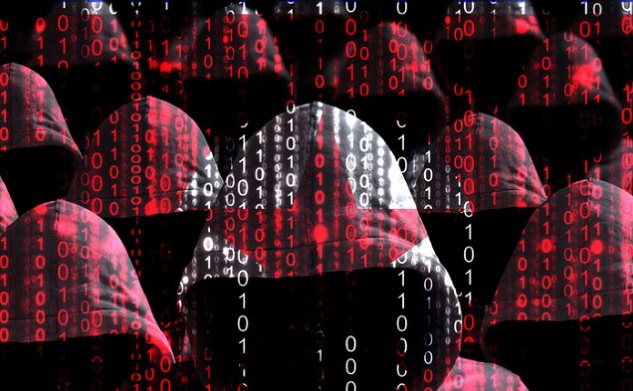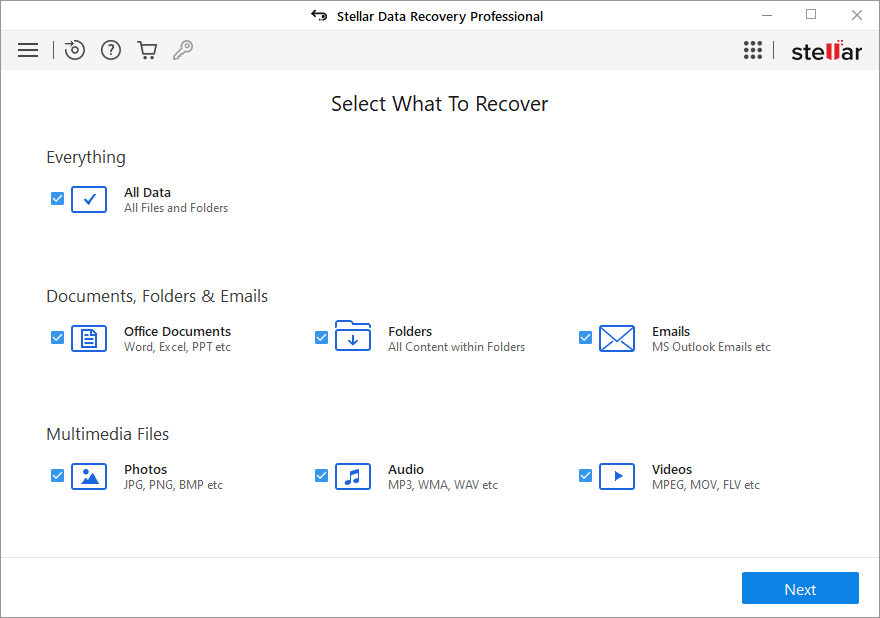What is JJLF ransomware?
JJLF is a ransomware type virus. Like all ransomware, it was created to demand money from victims by illegally encrypting files.

JJLF ransomware blocks files and adds the extension “.JJLF”. You will not be able to remove this extension. According to developers of the virus, files can be returned only with the help of decryption tools that only developers have. This information is in the ransom note that the scammers create and displays on the screen:
Аll yоur vаluаblе dаtа hаs bееn еnсryptеd!
Hеllо!
Sоrry, but wе hаvе tо infоrm yоu thаt duе tо sесurity issuеs, yоur sеrvеr wаs hасkеd. Plеаsе bе surе thаt yоur dаtа is nоt brоkеn. All yоur vаluаblе filеs wеrе еnсryptеd with strоng сryptо аlgоrithms AES-256+RSA-2048 аnd rеnаmеd. Yоu саn rеаd аbоut thеsе аlgоrithms in Gооglе. Yоur uniquе dесryptiоn kеy is sесurеly stоrеd оn оur sеrvеr аnd yоur dаtа саn bе dесryptеd fаst аnd sаfеly.
Wе саn prоvе thаt wе саn dесrypt аll yоur dаtа. Plеаsе just sеnd us 3-5 smаll еnсryptеd filеs whiсh аrе rаndоmly stоrеd оn yоur sеrvеr. Wе will dесrypt thеsе filеs аnd sеnd thеm tо yоu аs prооf. Plеаsе nоtе thаt filеs fоr frее tеst dесryptiоn shоuld nоt соntаin vаluаblе infоrmаtiоn.
As yоu knоw infоrmаtiоn is thе mоst vаluаblе rеsоurсе in thе wоrld. Thаt's why аll yоur соnfidеntiаl dаtа wаs uplоаdеd tо оur sеrvеrs. If yоu nееd prооf, just writе us аnd wе will shоw yоu thаt wе hаvе yоur filеs. If yоu will nоt stаrt а diаlоguе with us in 72 hоurs wе will bе fоrсеd tо publish yоur filеs in thе Dаrknеt. Yоur сustоmеrs аnd pаrtnеrs will bе infоrmеd аbоut thе dаtа lеаk by еmаil оr phоnе. This wаy, yоur rеputаtiоn will bе ruinеd. If yоu will nоt rеасt, wе will bе fоrсеd tо sеll thе mоst impоrtаnt infоrmаtiоn suсh аs dаtаbаsеs tо intеrеstеd pаrtiеs tо gеnеrаtе sоmе prоfit.
Plеаsе undеrstаnd thаt wе аrе just dоing оur jоb. Wе dоn't wаnt tо hаrm yоur соmpаny. Think оf this inсidеnt аs аn оppоrtunity tо imprоvе yоur sесurity. Wе аrе оpеnеd fоr diаlоguе аnd rеаdy tо hеlp yоu. Wе аrе prоfеssiоnаls, plеаsе dоn't try tо fооl us.
If yоu wаnt tо rеsоlvе this situаtiоn, plеаsе writе tо ALL оf thеsе 3 еmаil аdrеssеs:
JamesGouldiHip@yahoo.com
JohnPennegZZ@aol.com
LindaHunter474@gmail.com
In subjеct linе please writе уоur ID: -
Important!
* Wе аsking tо sеnd уоur mеssаgе tо АLL оf оur 3 еmаil аdrеssеs bесаusе fоr vаriоus rеаsоns, уоur еmаil mау nоt bе dеlivеrеd.
* Оur mеssаgе mау bе rесоgnizеd аs spаm, sо bе surе tо сhесk thе spаm fоldеr.
* If wе dо nоt rеspоnd tо уоu within 24 hоurs, writе tо us frоm аnоthеr еmаil аddrеss. Usе Gmаil, уаhоо, Hоtmаil, оr аnу оthеr wеll-knоwn еmаil sеrviсе.
Important!
* Plеаsе dоn't wаstе thе timе, it will rеsult оnlу аdditinаl dаmаgе tо уоur соmpаnу!
* Plеаsе dо nоt try tо dеcrypt thе filеs yоursеlf. Wе will nоt bе аble tо hеlp yоu if filеs will bе mоdifiеd.
g4wlF4tk
The email addresses of the scammers are given (jamesgouldihip@yahoo.com, johnpennegzz@aol.com, lindahunter474@gmail.com) to which you need to write in order to receive information about the amount to be sent to the scammers to receive decryption tools.
There is really no guarantee that you will actually get help, so the developers cannot be trusted. Remove JJLF ransomware to clean your device.
How to Remove JJLF ransomware
If you have working backups of your encrypted files or you are not going to try and recover lost files, then scan your computer with one or several antivirus and anti-malware programs or reinstall the operating system altogether.
Some alternatives:
Norton (Windows, macOS, iOS, Android) The link may not work correctly if your country is currently under sanctions.
However, if you want to try all possible ways of recovering encrypted files, including data recovery tools, then I suggest you use these tools first and scan with anti-malware later. Skip to the explanation
How to Recover Files Encrypted by cute Ransomware
If you want to recover files encrypted by ransomware you can either try to decrypt them or use methods of file recovery.
Ways to decrypt the files:
- Contact the ransomware authors, pay the ransom and possibly get the decryptor from them. This is not reliable: they might not send you the decryptor at all, or it might be poorly done and fail to decrypt your files.
- Wait for security researchers to find some vulnerability in the ransomware that would allow you to decrypt files without paying. This turn of events is possible but not very probable: out of thousands of known ransomware variants, only dozens were found to be decryptable for free. You can visit NoMoreRansom site from time to time to see if free decryptor for GandCrab exists.
- Use paid services for decryption. For example, antivirus vendor Dr. Web offers its own decryption services. They are free for users of Dr.Web Security Space and some other Dr. Web’s products if Dr. Web have been installed and running at the time of encryption (more detail). For users of other antiviruses the decryption, if it’s deemed possible, will cost €150. According to Dr. Web’s statistics, the probability of them being able to restore files is roughly 10%.
Other ways to recover encrypted files:
- Restore from backup. If you make regular backups to a separate device and check from time to time that those are in working order and files can be successfully restored – well, you probably won’t have any problems getting back your files. Just scan your computer with a couple of AVs and anti-malware programs or reinstall operating system, and then restore from backup.
- Recover some files from cloud storage (DropBox, Google Drive, OneDrive, etc.) if you have one connected. Even if encrypted files were already synced to the cloud, a lot of cloud services keep old versions of altered files for some time (usually 30 days).
- Recover Shadow Volume Copies of your files if those are available – ransomware usually tries to delete them too. Volume Shadow Copy Service (VSS) is a Windows technology that periodically creates snapshots of your files and allows you to roll back changes made on those files or recover deleted files. VSS is enabled together with System Restore: it’s turned on by default on Windows XP to Windows 8 and disabled by default on Windows 10.
- Use file recovery software. This probably won’t work for Solid State Drives (SSD – it is a newer, faster and more expensive type of data-storage devices) but is worth a try if you store your data on a Hard Disc Drive (HDD – older and more common as of yet storage device). When you delete a file from your computer – and I mean completely delete: use Shift + Del or empty the Recycle Bin – on SSD it gets wiped from the drive right away. On HDD however, it rather gets marked as deleted, and space it occupies on a hard drive – as available for writing, but the data is still there and usually recoverable by special software. However, the more you use the computer, especially if you do something that writes new data on the hard drive, the more chance that your deleted file gets overwritten and will be gone for good. That is why, in this guide, we will try to recover deleted files (as you remember, ransomware creates an encrypted copy of a file and deletes the original file) without installing anything on a disk. Just know that this still might not be enough to successfully recover your files – after all, when ransomware creates encrypted files it writes new information on a disk, possibly on top of files it just deleted. This actually depends on how much free space is there on your hard drive: the more free space, the less chance that new data will overwrite the old data.
- This might void your warranty.
- It’s harder to do with laptops, and you’ll need a special case (disk enclosure) to put a hard drive in before connecting it to another machine.
- It is possible to infect the other computer if you open a file from the infected drive before scanning the drive with AVs and removing all found malware; or if all AVs fail to find and delete the malware.
- Restart the computer.
- Once you see a boot screen tap F8 key continuously until a list of options appears.
- Using arrow keys, select Safe Mode with Networking.
- Press Enter.
- Hold down Windows key
 and hit X key.
and hit X key. - Select Shut down or sign out.
- Press Shift key and click on Restart.
- When asked to choose an option, click on Advanced options => Startup Settings.
- Click Restart in the bottom right corner.
- After Windows reboots and offers you a list of options, press F5 to select Enable Safe Mode with Networking.
- Launch Shadow Explorer.
- On the top left part of the window you can select a disk (C:\, D:\, etc.) and a date when a snapshot of files was taken.
- To recover a file or a folder right-click on it and select Export….
- Choose where do you want to put the files.
Going further, we need to 1) stop ransomware from encrypting files that we recover, if malware is still active; 2) try not to overwrite files deleted by ransomware. The best way to do it is disconnect your hard drive and connect it to another computer. You will be able to browse all your folders, scan them with antivirus programs, use file recovery software or restore data from Shadow Volume Copies. Although it is better to download all tools you’ll need beforehand and disconnect the computer from the Internet before connecting the infected hard drive, just to be safe.
Disadvantages of this method:
Another, easier, way is to load into Safe Mode and do all file recovery measures from there. However, that will mean using the hard drive and potentially overwriting some data. In this case it’s preferable to use only portable versions of recovery software (the ones that don’t require installation), download them onto an external device, and save any recovered files onto an external device too (external hard drive, thumb drive, CD, DVD, etc.).
Boot Into Safe Mode:
 Windows XP,
Windows XP,  Windows Vista,
Windows Vista,  Windows 7:
Windows 7:
 Windows 8,
Windows 8,  Windows 8.1,
Windows 8.1,  Windows 10:
Windows 10:
Back up Your Encrypted Files
It is always advisable to create a copy of the encrypted files and put it away. That might help you if free ransomware decryptor becomes available in the future, or if you decide to pay and get the decryptor but something goes wrong and files get irreparably damaged in the process of decryption.
Use File Recovery Tools to Recover Files
Screenshot:

About Stellar Data Recovery
Recover Encrypted Files From Shadow Copies.
The easiest way to access Shadow Volume Copies is by using a free tool called Shadow Explorer. Just download the latest version and install it (or download the portable version).
Remove JJLF ransomware
Now that you have your recovered or still encrypted files on an external device, it is time to scan your computer with AV and anti-malware software or, better yet, reinstall the operating system, to fully get rid of possible ransomware traces. Remember to also scan your external device before putting files back on your computer!